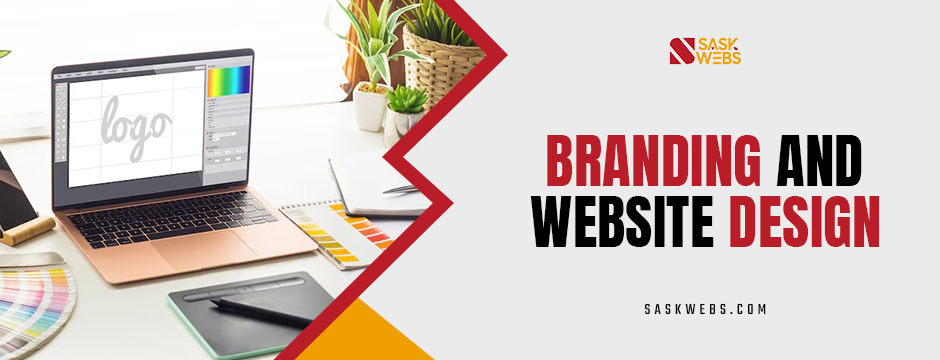
In today’s fast-paced digital world, your brand’s first impression is often made online, and it happens in mere seconds. Whether you’re a startup, an established business, or a growing eCommerce store, your online presence plays a pivotal role in gaining user trust. And that trust is the foundation of every successful business relationship.
While quality content and services matter, it’s your visual identity and user experience that form the emotional connection. Cohesive branding and Website Design can be the deciding factor between a user bouncing off your site or engaging further. Visual consistency, tone of voice, colour palette, typography, and layout all contribute to your brand’s digital personality. In this blog, we’ll explore how cohesive branding and well-structured website design foster trust, enhance user experience, and ultimately drive conversions.
Stability Develops Trust
Stability is the basis of trust. When your branding elements—such as logo, colours, imagery, and tone—are consistent throughout your pages, it provides a sense of stability and professionalism, giving visitors peace of mind. This is a core principle of effective Branding and Website Design, where every visual and written element works together to create a unified identity. When visitors encounter a consistent experience and branding, it shows them that you pay attention to detail and have a clear vision. Subconsciously, they associate these qualities with trustworthiness and reliability.
If visitors see a contemporary, sleek-looking homepage but the blog section contains dated fonts, colours that do not match up, the visitor could assume there is a disconnect or caveat. Stability creates consistency, and consistency builds familiarity, which eventually equates to loyalty.
Visual Identity Expresses Brand Personality
Branding is more than just a logo. It is a visual and emotive language that communicates with users who you are, what you represent and why they should care. You are best able to express your brand through the design of your website.
For example, a luxury jewellery brand would use elegant fonts, high-quality product photography, and a minimalist layout to curate exclusivity and refinement. A technology startup could use loud typography, high contrast colour combinations and dynamic photography to convey innovation and enthusiasm.
User Experience (UX) Exhibits Competence
Your website shouldn’t just be beautiful, it should also be intuitive. A gracefully designed website steers people from point A to point B with very little effort, limiting frustration as people complete actions on your website. Elements that support UX and foster trust include:
- Easy navigation
- Responsive on mobile devices
- Quick load time
- Clear call-to-action (CTA) buttons
- Clear and concise content flow
- Easy access to contact and support
When a user can’t find the necessary information or they have to deal with inefficient and clunky pages, they are less likely to convert or return. On the contrary, when a user has a seamless experience, it communicates competence and care, which builds credibility.
Authentic Content Develops Connection

Branding and Website Design consistency isn’t limited to visuals; there’s also consistency with your content and tone of voice. A trustworthy website has authentic, honest, clear, and helpful content that is aimed towards the ideal user’s needs.
Your messaging should reflect the tone and personality of your brand, whether it’s professional, friendly, witty, or inspirational. This tone should remain constant in your homepage, and product pages, as well as your blog, and any customer support responses. Also use stories, testimonials, or “behind-the-scenes” content that humanises your brand. Authenticity helps create relatability, and when users feel like they know your brand, they will tend to trust you and choose you.
Social Proof and Brand Reputation
Social proof plays a critical role in trust-building. Integrating reviews, client testimonials, press mentions, and case studies directly into your website design offers third-party validation that your business delivers on its promises.
Strategically placing this content on your homepage, service pages, or landing pages reinforces your credibility. Coupled with cohesive branding, these elements build confidence and reduce buyer hesitation.
Pro tip: Make sure the design layout of testimonials and review sections aligns with the rest of your brand’s visual language. Cluttered or poorly designed sections can unintentionally diminish the impact of positive feedback.
Secure and Professional Design Choices Matter
Trust is also built through subtle design decisions that communicate security and stability. Using HTTPS encryption, displaying privacy policies, and adding security badges on payment pages signal that user data is protected.
Design features like well-organised headers, uncluttered layouts, high-quality imagery, and consistent spacing convey professionalism. These small elements subconsciously influence how users perceive your trustworthiness. Even your typography speaks volumes—cheap-looking fonts or broken formatting can create an impression of neglect or inexperience.
Wrapping Up
In a world where users make snap judgments, a cohesive Branding and Website Design can be your most powerful asset. From visual identity and intuitive navigation to clear messaging and consistent tone, these components work together to build a strong foundation of trust.
If you’re looking to elevate your online presence and ensure that your brand inspires confidence from the very first click, partnering with experienced branding professionals is key. That’s where SaskWebs comes in. With expertise in high-end branding and modern web design, we help businesses craft visually stunning and trust-inspiring digital experiences. Whether you’re launching a new brand or refreshing an existing one, our team delivers strategic design solutions that align perfectly with your brand vision.






